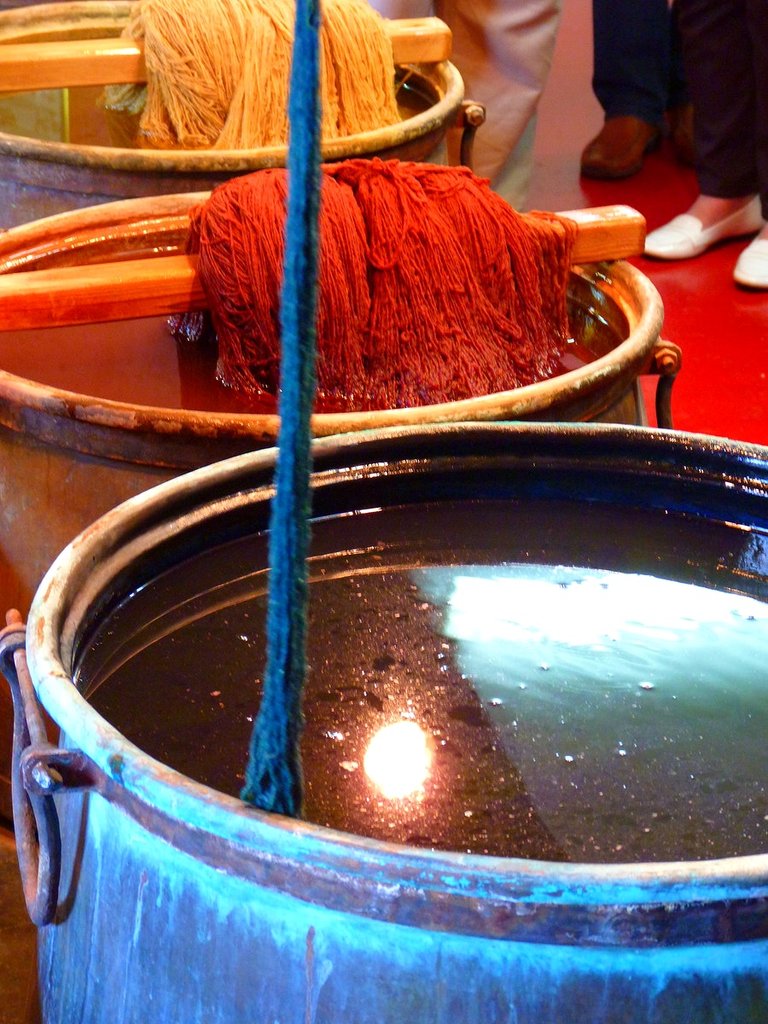Why Your Clothes Dye Will Run Off
As a student in secondary school, I was washing my clothes myself and I would hand wash them since we do not have money to purchase a washing machine. I washed this cloth properly but myself and my grandma always had a problem and that problem span from sorting of cloths based on color. If my grandma saw me washing my white clothes with colored clothes, she would yell at me and tell me I was going to destroy the white cloth by allowing the dye on the colored get into the white cloth. This happened a few times especially when washing red, or purple clothes but I can say that it has reduced in recent time as clothes barely wash off its dye like in the past and we have seen that the sticking of dyes to clothes have to do with the type of dye, the fabric and how the cloth is washed.
All the textiles in the house ranging from clothes, cushions, curtains, and carpets have passed through dye. In the past, dyes were gotten from natural sources like plants, insects like beetle shells, animals like sea snail mucus, and minerals but we began to use synthesized dye from 1856 after a synthetic bright purple dye was discovered and since then, we have been doing a lot of dyeing with synthetic dyes.
I remember I was thought how to dye a cloth in school in one of those tie and dye classes and it was a fun learning experience. Either the dye is natural or synthetic, the process of dyeing is the same with the fiver being inserted into hot, colored soup that has a notable stink. This process allows the molecule of the dye to bind to the fibers and while some bind with no help, some need the help of mordants which are metal ions that binds to both the dye and the fiber keeping the bond secure.
I remember my aunt usually talk about Washfastness and it is the ability for a fabric to retain its dye when being washed and washfastness has become a big problem for textile companies because people hate to see that their clothes wash off when washed so they began to use reactive dyes which are dyes that form super covalent bonds in the 1950s. But when it comes to washfastness, we cannot blame the dye alone, detergents also have a blame as well. Detergents are made of surfactants that specialized in bonding to both grime and water causing the trapped dirt by the surfactant to be washed away with water.
In the past molecules from detergents remove both the dirt and dyes but with innovations in recent days, modern detergents remove stains without the dye. Also, unlike in the past that clothes have to be washed in hot water to remove most dirt and stains, we do not need that today has improvement have been done to stain removal. Also, synthetic fibers are now in existence and they are easy to wash, water repelling to a reasonable extent, and don't let go of dye easily. Although synthetic fibers are good with washing, it account for about 35% of global microplastic pollution.
When next you wash your cloth, you do not need to worry much about the running off of dyes and if your cloth ever does wash off, then it is either one of these three that has a problem; the fabric, the dye, or the detergent.
You Can Read More
https://p2infohouse.org/ref/27/26611.pdf
https://archive.org/details/rainbowmakersori0000trav/page/n5/mode/2up
https://www.researchgate.net/profile/Bruce-Cameron-3
https://essentialchemicalindustry.org/materials-and-applications/surfactants.html
https://textileexchange.org/app/uploads/2023/11/Materials-Market-Report-2023.pdf
https://www.sciencedirect.com/science/article/abs/pii/S0025326X16307639
https://www.vox.com/the-goods/2018/9/19/17800654
https://onlinelibrary.wiley.com/doi/pdf/10.1155/2020/6628404


Thanks for your contribution to the STEMsocial community. Feel free to join us on discord to get to know the rest of us!
Please consider delegating to the @stemsocial account (85% of the curation rewards are returned).
Thanks for including @stemsocial as a beneficiary of this post and your support for promoting science and education on Hive.